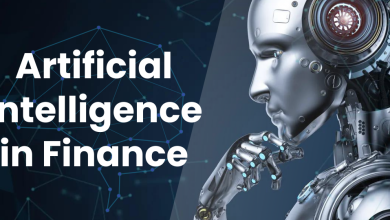Retailers today are contending with the rise of AI “super-agents”: AI-powered autonomous systems that are capable of orchestrating and executing complex workflows.
While many companies still rely on isolated AI agents – autonomous platforms that nonetheless struggle to overcome silos and execute processes across an entire organization – market leaders like Walmart are consolidating their agentic AI strategies, turning their various isolated AI agents into a synchronized network of tools that always work in tandem.
In other words, a super-agent.
These powerful agentic networks will define the next wave of operational efficiency, customer experience, and personalization in retail. Here’s how companies without massive budgets or resources should approach the transition.
Defining Super-Agents
Most traditional AI agents handle isolated, singular tasks – answering support tickets, summarizing sales calls, generating marketing emails. What they lack is a unified orchestration layer that can coordinate these individual actions across entire workflows.
The super-agent isn’t necessarily a “bigger, better, AI-powered agent”; rather, it’s been compared to the conductor of an orchestra. Individual agents are the musicians, each trained to play one instrument, while the super-agent guides them through the symphony.
For instance, in a traditional configuration, an autonomous marketing agent sends a generic product promotion to a user, while a separate logistics agent estimates delivery costs and time. Both agents address one transaction but have no coordination between them.
Compare that to a super-agent, which combines customer purchase history, loyalty data, real-time inventory levels, and warehouse-to-home delivery timelines simultaneously. With this influx of cross-department data, super-agents can then create a personalized promotion that offers relevant products to the right customer, guarantees delivery estimates, and offers the best rate.
Stand alone, one task-oriented agents simply can’t answer to so many variables.
Challenges to Adoption
Despite their complex capabilities, super-agents are still fallible organizational touchpoints.
Shared context poses the first hurdle, as it is difficult to unify the data from agents built on different frameworks, models, and applications. For example, sales teams might use a number of different Agentic AI-powered business tools, each with distinct built-in context from their respective platforms. Unifying their operations then becomes exponentially harder because discrepancies between data sources can lead to conflicting outputs. Organizations must always ensure that agents will interpret prompts and requests in a systemized, synchronized manner grounded in organization-specific logic and definitions.
A true super-agent is one that overcomes these hindrances rather than merely chaining siloed tasks together in succession. The unified orchestration layer should maintain standardized contexts, data, and interpretations across the entire agent network so that interpretation remains consistent and all agents respond to requests identically, regardless of their underlying purpose.
How Super-agents Supercharge Retail
- Hyper-personalization
Organization-wide agent integration enables greater personalization at scale. By combining the forces of agents who handle purchase history, inventory, supply chain status, and customer requests, organizations can create personalized delivery forecasts, product suggestions, and promotional offers on a customer-by-customer basis, no matter which agentic touchpoint they engage with.
- Better conversational memory
Super-agents don’t just remember their last customer interaction – they enable long-term, cross-channel customer memory. A retailer’s loyalty program, for instance, can track users’ journeys across mobile apps, website, and in-store visits, ensuring a consistent experience, regardless of where customers shop.
Large industry giants can personalize each product offer and delivery rates by pairing customer tracking insights with data on demand fluctuation and competitor activity, allowing for a more holistic understanding of each customer journey.
- Faster fulfillment
For some companies, agents can boost demand forecasting efficiency and cut operational emissions by utilizing AI-driven supply chain optimization. Others have similarly improved their sorting capacity significantly through super-agent management of warehouse and logistics operations.
Both cases enabled quicker, more efficient order processing and delivery.
How to Follow Walmart’s Lead
McKinsey reports that 92% of companies plan to increase their AI investments in the next three years, yet only 1% of leaders call their companies “mature” enough to integrate AI meaningfully into workflows.
While not every retailer can develop deep in-house technical expertise overnight, retail giants are setting a precedent for how to effectively integrate AI for the rest of the industry – providing a road map for future AI plans, even if adoption timelines must be adjusted.
Indeed, while many organizations can benefit from super-agents, different types of retailers must take different approaches. Traditional retailers, for instance, often lack extensive technical teams, making it harder to capture AI value. Their path to super-agent deployment will inevitably differ from digital-native ecommerce retailers, who already operate mainly in cloud environments and are better positioned for rapid integration.
The Blue and Yellow Lesson
Retailers should not be racing to immediately build super-agents from scratch; Instead, they should recognize that agent orchestration, however gradual, is becoming a key strategic advantage.
Here’s how to begin the shift.
Start with integration, not invention. Retailers without an extensive engineering muscle can still adopt off-the-shelf super-agent platforms designed for connecting existing systems. This allows for the benefits of orchestration – shared context, aligned data, unified interpretation – without the cost and complexity of building in-house.
In this way, retailers can leverage existing AI capabilities as many already have AI embedded in marketing platforms, CRM systems, and supply chain tools. Adopting a third-party orchestration layer effectively connects these agents so they can “speak” to each other without needing to introduce new tools.
Once they outsource the orchestration layer, retailers can actively create a standardized ontology – formalized structures that define concepts, definitions, and inputs – across their agents. This ensures that even across multiple agents, there is always a single source of truth for generating output.
Next, focus on business outcomes, not the tech itself. Ensure that one’s super-agent vision is rooted in tangible goals: better customer experience, operational efficiency, and personalization at scale. Pursuing a super-agent for its own sake will inevitably fail. Adoption must instead be tied to overarching organizational goals.
Finally, speed matters. Digital-native e-commerce retailers with cloud-based systems and fewer legacy constraints can move faster toward orchestration than traditional retailers. The lesson for retailers of any kind should be to identify structural advantages and setbacks, and sequence AI strategy accordingly.
The Super-agent Standard
While the transition to super-agents will arrive for each organization in different ways, their adoption will undoubtedly be a defining competitive advantage in the coming years.
By adopting Walmart’s orchestration mindset and adapting it to their own scale, retailers can align the context, data, and interpretations of their agents and unlock unprecedented personalization and efficiency. Those who start aligning their agents now will capture the earliest and most significant value and remain most competitive in the super-agent era of the future.




